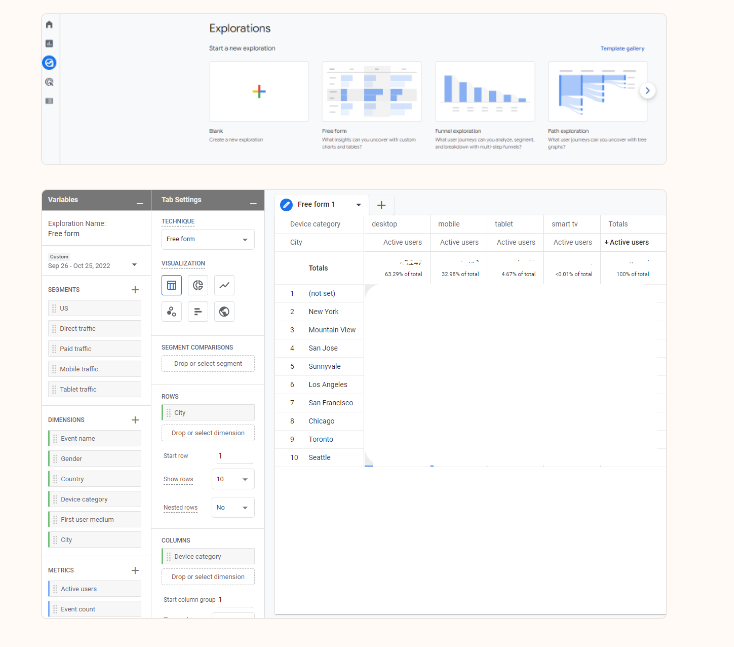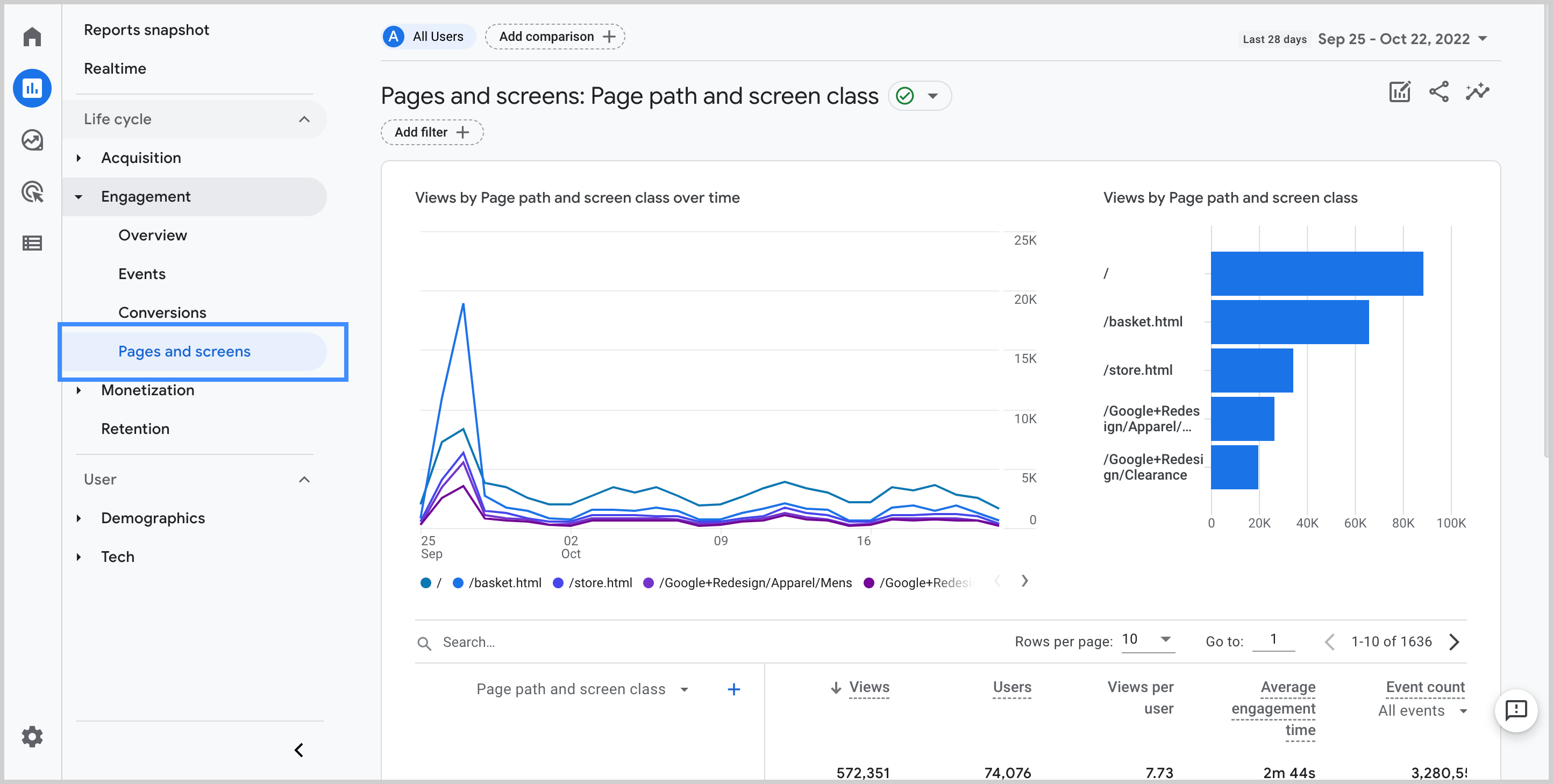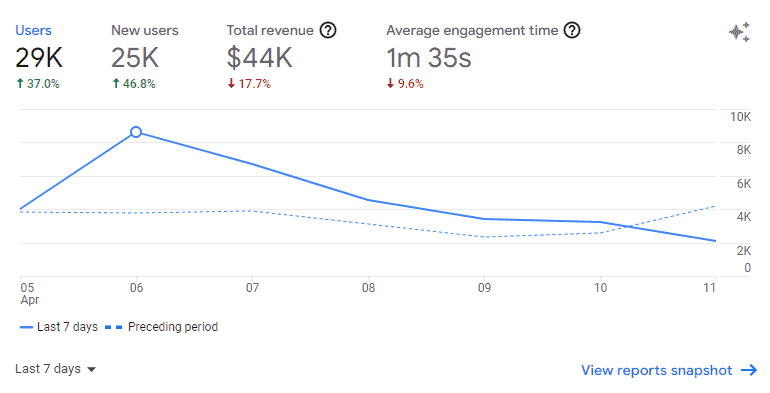Digital Transformation
Is Your Content Marketing Strategy Ready for GA4?
The latest Google Analytics update (GA4) is the first major update to Google’s web analytics service since 2012.
A lot has changed since then—namely, the arrival of two new user privacy laws (GDPR and CCPA), increased use of mobile apps, and the phasing out of third-party cookies. To adapt, GA4 is an overhaul of the current version (Universal Analytics or UA) and is designed for the world we live in now.
For content marketers, GA4 offers more detailed data on the user’s journey across apps and websites and, using machine learning, GA4 can predict how users will behave. With a clearer map of how users got to your content and what they’re likely to do next, marketers can set more specific goals for which content types to produce and how to measure their success.
With that said, let’s explore two of GA4’s standout features and three tips for content marketing teams to capitalize on.
GA4’s Most Significant Features for Content Marketers
With GA4, Google is tackling the biggest challenge marketers face today: understanding customer behavior. That’s why the two most significant features in GA4 address the often-fragmented customer journey across apps and websites and how to track user behavior in a cookie-less world.
Track Users Across Apps and Websites
Consumers now engage with brands across different devices using mobile apps and websites. This “journey” can be disjointed and hard to track with the current version of Google Analytics, which only tracks website activity. GA4 combines website and app usage into a single report. The emphasis is now firmly on tracking “the user” rather than “user sessions.”
Marketers will have a clearer view of the whole customer journey, from where customers first engage with your brand to where and when they make a purchase. Armed with multi-attribution data that accounts for all the user touchpoints within your brand — from, say, mobile app to website to blog post to video to demo sign-up — marketers can see the value each touchpoint brings to the journey and measure how well a piece of content leads to a conversion.
Use Machine Learning to Predict User Behavior
New data privacy laws combined with users demanding more control over how their web activity data gets used have led to the slow death of third-party cookies. GA4 was built with this slow death in mind.
GA4 uses machine learning and data modeling to fill in gaps where user behavior data will be incomplete without cookies. GA4’s machine learning model will scrutinize first-party and conversion data to predict if users will make a purchase or churn (using probability scores).

GA4’s machine learning modeling is key for marketers because it measures which audiences are most likely to convert based on past trends. Marketers can then target these audiences with the appropriate content.
3 Tips for Preparing Your Content Strategy for GA4
For brands, GA4 offers more tangible ways to measure if you’re truly reaching your audience and meeting your content marketing goals. With that in mind, here are three tips for getting your content house in order ahead of the switch to GA4.
1. Create Specific Content Goals for GA4.
Because GA4 allows teams to track and analyze data from both mobile apps and websites, there will be more data. Thankfully, GA4 consolidates that data into one report.
But a pile of data is not a strategy. You have to make sense of the data you’ve accessed and apply it to your content. Vague goals will only create a disconnect between your user data and the content you produce.

Examples of specific, measurable content goals that take advantage of the new GA4 capabilities include:
- Increase organic traffic
- Increase user engagement (time on page, shares, comments)
- Improve conversion rates (sign-ups, sales)
- Increase new leads
- Improve content marketing ROI
GA4 also allows you to set goals within the platform for easy tracking.
Of course, you would set content goals regardless of GA4, but GA4 provides deeper analysis—via its Pages and Screens reports—of the most-read content, pages users scrolled on the most, and pages with the most traffic.
GA4 provides a greater understanding of traffic patterns and topics that resonate, so you can pursue content goals with more confidence.
2. Get to Know Your Audience Better With GA4.
You should already know your target audience’s tendencies and behavior, but GA4 can help you go deeper with its User Metrics feature.
User metrics provide data on the number of users who engaged with a piece of content, whether those users are new or active, and how long they stay on the page. It also measures whether they used your app or website to access the content.
Additionally, GA4 allows you to create specific audiences to target based on their behavior and customer journeys.
Caution: Don’t rely solely on GA4 to understand your audience. Be sure you’re talking to them and reading the comments they leave on your website and social media channels. You can then use GA4 to assess how well your content engages and keeps them coming back.
3. Establish Your Most Important Content Types Using GA4.
To have a full-funnel content strategy, you should produce different content types for each stage—blogs, eBooks, videos, case studies, etc.
However, with so much content and different metrics for each type, it’s easy for any company to fall into the trap of producing too much content and not measuring it properly.
GA4 excels at tracking metrics for different content types in one report. You can use GA4—again via the Pages and Screens report—to figure out which content types work by analyzing metrics such as video play duration, page scroll depth, and number of downloads.
Regardless, you’ll be producing a variety of content to serve the funnel. GA4 is effective at measuring all of it, so you’re not wasting resources creating gated eBooks few people download or videos few people watch.
GA4 Drives Content Marketing Results
Data is essential to content marketing. It helps identify the topics that will help your target audience do their jobs better (B2B) or improve their lives (B2C).
GA4 has been 11 years in the making and is built for our data-driven culture. So, it behooves all marketing teams to take advantage of GA4 for the most targeted content strategy possible.
To stay informed on what’s coming in MarTech, subscribe to The Content Strategist for more insight on the latest news in digital transformation, content marketing strategy, and rising tech trends.
Image by Alisa ZahoruikoGet better at your job right now.
Read our monthly newsletter to master content marketing. It’s made for marketers, creators, and everyone in between.






